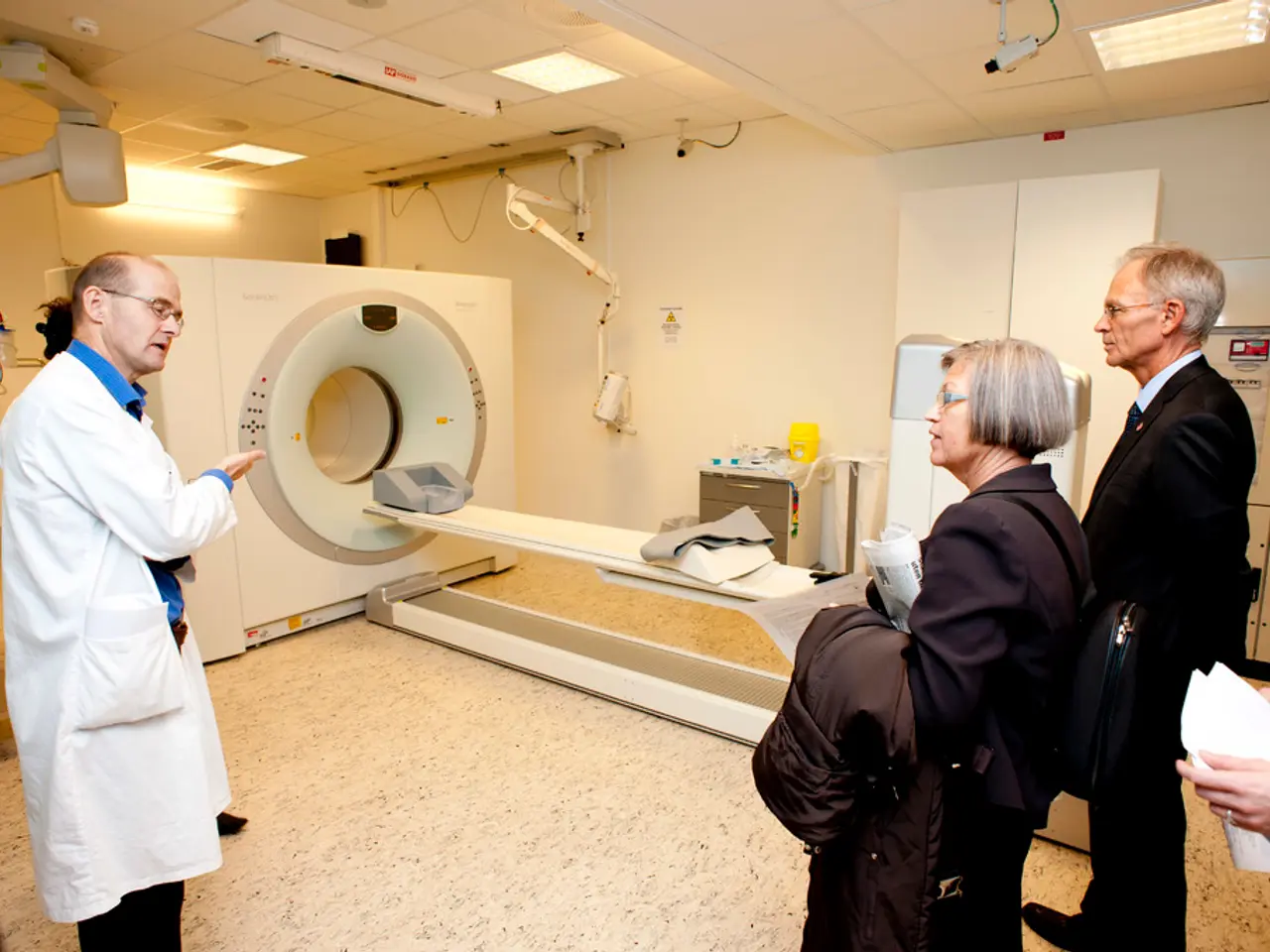Lung Function Examinations: Understanding Their Purpose
Pulmonary function tests (PFTs) are non-invasive procedures used to assess how well a person's lungs function. These tests are essential in diagnosing and monitoring a wide range of lung conditions, including obstructive and restrictive lung diseases, smoking-related lung damage, and other pulmonary impairments.
PFTs measure various parameters such as lung volumes, capacities, airflow, and gas exchange efficiency. Key tests include spirometry, which measures the amount of air a person breathes in and out, and lung diffusion capacity tests, which determine how well oxygen from the air a person breathes gets into the blood. Pulse oximetry tests, which measure the levels of oxygen in the blood without any breathing involved, are also part of the PFTs.
Obstructive lung diseases, such as chronic obstructive pulmonary disease (COPD) and asthma, can be evaluated using PFTs. These tests can assess airflow obstruction and help determine the effectiveness of medication in asthma management. On the other hand, restrictive lung diseases, including interstitial lung disease and lung fibrosis, where lung expansion is limited and volumes are reduced, can also be diagnosed or monitored using PFTs.
Early detection of changes in lung function due to smoking can prompt intervention to prevent progression to COPD. PFTs may also be used for people who work in hazardous environments or breathe in fine particles at work.
It is important to note that PFTs are generally safe and noninvasive. However, some tests may require blood, which could have a risk of bleeding or infection in the area. To ensure accurate results, people should avoid wearing tight clothing, smoking or drinking alcohol before the test, and strenuous exercise or eating a full stomach.
PFTs provide measurements such as forced vital capacity (FVC), forced expiratory volume in one second (FEV1), lung volumes (tidal volume, residual volume, total lung capacity), and diffusing capacity for oxygen. These measurements help differentiate between different types of lung disease and track disease progression or response to treatment.
PFTs are often ordered before major surgery, especially for those at increased risk. They can help diagnose or investigate conditions like asthma, allergies, chronic bronchitis, emphysema or COPD, lung cancer or pulmonary tumors, lung fibrosis, respiratory infections, sarcoidosis, and scleroderma.
In summary, PFTs provide comprehensive insights into lung function, critical for diagnosing obstructive and restrictive pulmonary disorders, monitoring chronic lung diseases, and detecting early lung damage, especially in smokers. They are an invaluable tool in the field of respiratory medicine.
[1] American Lung Association. (2021). Pulmonary Function Tests. Retrieved from https://www.lung.org/lung-health-diseases/lung-disease-lookup/pulmonary-function-tests [2] National Heart, Lung, and Blood Institute. (2021). Lung Function Tests. Retrieved from https://www.nhlbi.nih.gov/health-topics/lung-function-tests [3] Mayo Clinic. (2021). Pulmonary function test (PFT). Retrieved from https://www.mayoclinic.org/tests-procedures/pulmonary-function-test/about/pac-20385240 [4] National Institute of Health. (2021). Smoking and Lung Health. Retrieved from https://www.ncbi.nlm.nih.gov/books/NBK224075/ [5] British Lung Foundation. (2021). Understanding Spirometry. Retrieved from https://www.blf.org.uk/support-for-you/lung-health-advice/lung-function-tests/understanding-spirometry
- Science and medical professionals utilize pulmonary function tests (PFTs), which measure various respiratory parameters, to diagnose and monitor a range of respiratory conditions, including obstructive and restrictive lung diseases, as well as smoking-related lung damage.
- To ensure the accuracy of PFTs, it is necessary for individuals to avoid wearing tight clothing, smoking or drinking alcohol, strenuous exercise, or eating a full stomach prior to the test.
- PFTs offer healthcare professionals valuable insights into the health and wellness status of an individual's respiratory system, enabling the early detection of diseases such as asthma, COPD, lung cancer, and other respiratory-related medical conditions.




